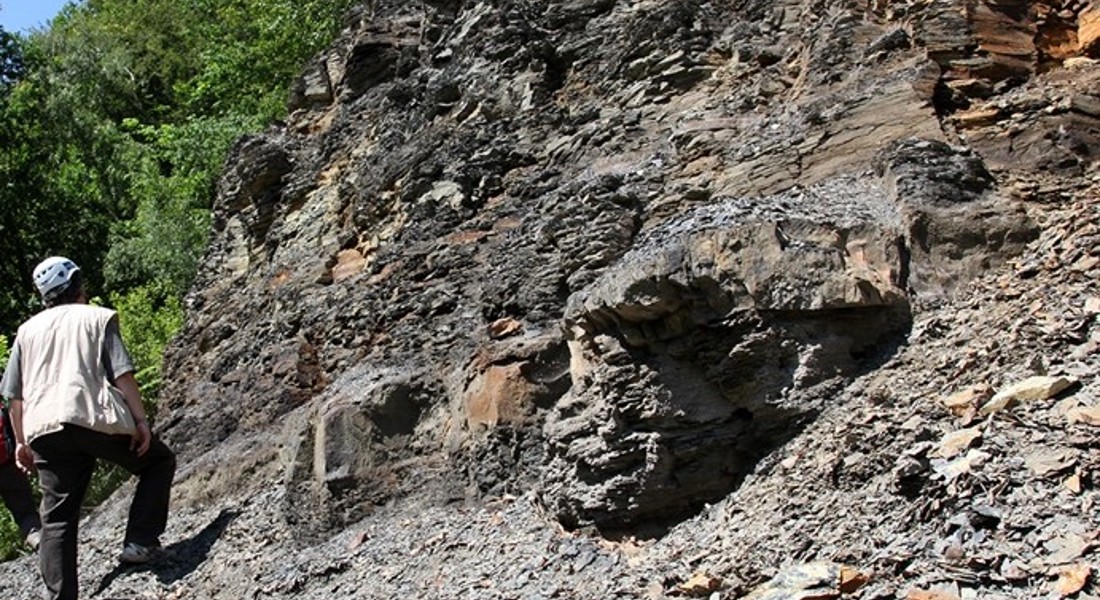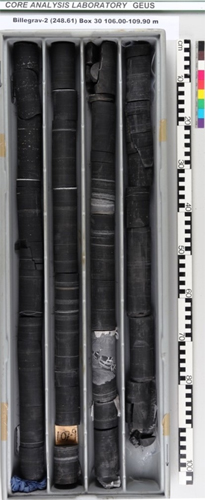Telling actual time in ancient rocks
In a new study published in Nature Communications, researchers from the University of Copenhagen apply a new technique allowing them to disentangle 500 million-years-old rocks millimeter-by-millimeter, resolving the deposition of these rocks at the scale of millennia and thus setting completely new standards for determining actual time in the ancient rock record.

Some 350 years ago, the Dane Nicolaus Steno discovered that sedimentary rocks pile up in a sequential order with the oldest layers lying beneath the younger ones. A simple but fundamental concept today known as Steno’s Law of Superposition. Steno realized that rocks may be perceived as archives of past events in Earth history. With this discovery, Steno had founded the discipline of stratigraphy, which ever since has been refined.
Rock archives are much like the pages in a book telling a progressive story from the beginning to the end. However, resolving these detailed events in Earth history is a monumental task that builds on 350 years of knowledge since Steno’s discovery. Fossils are the primary mean to resolve the time record as species originate and evolve and then typically go extinct. However, this technique – known as biostratigraphy – has its limits.
“Studying fossils in the rock record has provided an excellent tool to understand the Earth’s past and indicate the approximate age of geological deposits. However, there are two main limits to the application of biostratigraphy. One is that only animals with a hard skeleton can be fossilized in sufficient numbers to be applied biostratigraphically, but they have only existed through the latest ~10% of Earth history, and secondly, it is a relative method that does not provide actual time intervals – for instance, how long time passed during a given climatic or evolutionary event. 10.000 years? 1.000.000 years? So, the temporal uncertainty has been considerable”, says Christian Mac Ørum Rasmussen from Globe Institute, one of the co-authors of the new study.
Cutting-edge method to search for the Earth’s natural climate cycles
In the new study, the researchers have used a cutting-edge method to search for the Earth’s natural climate cycles as they are expressed in ancient sediments deposited in the sea. These cycles are controlled by the Earth’s orbital movements that affects solar insulation and thereby create subtle climatic changes that are expressed in the sediments as rhythmic signals of known durations.
“We have chemically analyzed drill cores of black shale from southern Sweden and Bornholm deposited in the sea some 500 million years ago using a so-called X-ray Fluorescence Scanner. This high-tech equipment allows us to determine variations in elements at the sub-millimeter scale. By looking at certain heavier elements, such as aluminium, we have found chemical variations that oscillate in tune with climate cycles”, explains lead-author, Research Assistant Zhengfu Zhao from the Department of Geosciences and Natural Resource Management (IGN) and Globe Institute.
Co-author Arne Thorshøj Nielsen, Associate Professor at IGN, elaborates “In this manner we have now resolved a 16-million-year long interval – from 500 to 484 million years ago – at the scale of millennia. Given that this is conducted in a continuous black shale sequence, where no visible climate cycles can be seen with the naked eye, this represents a considerable advancement within the field of stratigraphy”.
Extremely detailed analyses of drill-cores

The black rock show no visible signs of periodic climate cycles. Yet, geoscientists from the University of Copenhagen have discovered chemical cycles in the composition of the Alum Shale that can be used as a metronome to tell actual time in the ancient rock record.
The new study published in Nature Communications by Zhao and colleagues show a precise timeline for a 16-million year long interval in the Cambrian Period (500–484 million years ago) based on extremely detailed analyses of drill-cores like the ones shown here. Photo: Niels Schovsbo, GEUS.
The new study therefore opens many new research avenues, one of which will be the understanding of how climate change affected the biosphere in deep time and, conversely, how the biosphere has affected the climate in the past:
“We have discovered a universal method that in theory is not limited by the occurrence of fossils. This tool can now be applied to essentially any time interval and help us understand the first 90% of Earth history in actual time – also before the emergence of animals and during many climate events also at ancient times when climate was significantly warmer than today. Our method further enables us to start studying and exploring the interplay between biological evolution and changes in the physical Earth. This has hitherto been impossible given the huge difficulties in resolving the rock record in sufficiently high temporal resolution”, ends Associate Professor Tais W. Dahl, Globe Institute, co-author of the new study.
Zhao, Z., Thibault, N.R., Dahl, T.W. et al. Synchronizing rock clocks in the late Cambrian. Nat Commun 13, 1990 (2022).
Topics
Contact
Nicolas Rudolph Thibault
Associate Professor
nt@ign.ku.dk
P: +45 35 32 33 50
Arne Thorshøj Nielsen
Associate Professor
arnet@ign.ku.dk
P: +45 35 32 23 76
M: +45 40 42 12 89
